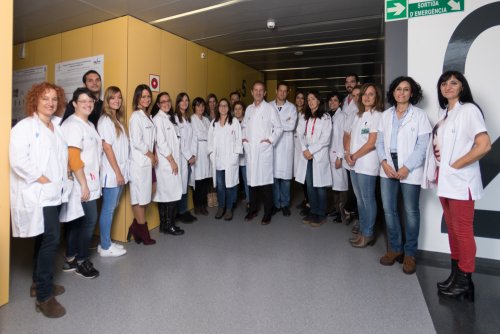A team of IRBLleida researchers describes for the first time the sleep health of Catalans using data from the Health Survey of Catalonia
Researchers use a new scale for the first time to measure the health of sleep, which is based on satisfaction, alertness, time, efficiency and duration
Researchers from the Translational Research in Respiratory Medicine Group of the Biomedical Research Institute of Lleida (IRBLleida) and the University of Lleida (UdL) have described, for the first time, the sleep health of Catalans through the analysis of information of 4,385 people, with data from the Health Survey of Catalonia (ESCA). According to the study, the health of sleep in Catalonia varies according to the age and gender of the person. They have established that sleep health declines with age and that in women it is always somewhat lower than in men. The article has recently been published in the prestigious magazine Plos One.
This study emphasizes the important association between sleep and general health and well-being, as well as the need for new tools for measuring sleep health. For this reason, researchers are pioneers in the use of a scale, called SATED, which measures the health of sleep based on satisfaction (subjective evaluation of sleep), alertness (ability to stay alert during sleep), time (time of day when sleep occurs), efficiency (the ease of falling asleep and going back to sleep) and duration (number of hours of sleep per 24 hours).
Although the scale has not been validated, the study reveals that the SATED score has some advantages compared to the evaluation of only sleep duration, since it provides a more complete assessment of sleep health. Therefore, the researchers propose the possibility of including multidimensional tools for the evaluation of sleep health in population surveys.
The research has been carried out with data from the Health Survey of Catalonia (ESCA) in collaboration with researchers from the Department of Basic Medical Sciences of the UdL, the General Subdirectorate of Health and Professional Planning of the Department of Health, the Center for Sleep and circadians Science from the University of Pittsburgh in the United States of America and the Center for Biomedical Research in Respiratory Diseases Network (CIBERES).
Research in sleep health has traditionally focused on sleep disorders, instead of studying sleep health and promoting it. More recent studies have evaluated specific sleep characteristics in relation to general health and the appearance of chronic diseases, such as obesity, diabetes, hypertension or cardiovascular diseases, among others. For this reason, the Department of Health included various issues related to sleep in the Health Survey of Catalonia, such as the SATED scale. The study highlights the importance of prevention strategies, education and health promotion initiatives aimed at improving sleep health.
Health Survey of Catalonia (ESCA)
The Catalan Health Survey (ESCA) collects information on the population living in Catalonia, with no age limit, on health status, behaviors related to health and the use of health services. The Health Survey of Catalonia provides relevant information for the establishment and evaluation of health policies specified in the Catalan Health Plan.
It consists of a personal interview that the interviewers do at the home of the selected people. Since July 2010, there have been an uninterrupted 5,000 interviews per year throughout Catalonia. The company contracted to conduct the interviews is IPSOS. Your pollsters identify through a Health Department credential.
The ESCA is an official statistical action of the Department of Health foreseen in the current Statistical Plan of Catalonia, which entails the guarantee of the protection of the personal data (article 36 of the Law 23/1998, of December 30th, of statistics of Catalonia), protected by statistical secrecy (articles 24 to 33 of Law 23/1998, of December 30th, on statistics of Catalonia).

The research, carried out with data from the Health Survey of Catalonia (ESCA), has been published in the prestigious magazine Plos One






